Through Anger
2022 • embodied design • Social impact design • 16 weeks • UX Design + Research
Overview
Access to anger is granted unequally, especially to those in marginalized communities, yet it remains one of the most powerful resources for creating change. Audre Lorde talks about "Knowing Resistant Anger," a vital tool for countering injustice. ‘Knowing’ because, in Lorde’s words, it ‘is loaded with energy and information’ and ‘resistant’ because its vibrancy endures repeated silencing. With a playful and communal approach, "Through Anger" encourages participant-led design outcomes, discussions, and reflections. Staying true to its grassroots origins, this project utilizes simple structures and materials for easy replication in diverse settings.
Framework
Drawing from David Graeber's theory of manners and Theater of the Oppressed's concept of "Rehearsal for reality," as well as intersectional feminist thinkers like Audre Lorde and somatic healing practices, I propose that creative movement and communal building projects can facilitate a connection to "Knowing Resistant Anger" (Lorde, 1987) for marginalized people. This connection can lead to resistance against silencing practices, channels towards liberation, and a stronger sense of community.
My Role
I served as the sole researcher and designer for this project, submitted as part of my thesis for the MA User Experience Design program at University of the Arts London.
Methodology
- Literature Review
- Secondary Research
- Interviews
- Directed Storytelling
- Comparative Analysis
- Empathy Map
- Needs Map
- Embodied Design Workshop
- Toolkit
- Virtual Workshops
- Crazy 8 Brainstorming
- Co-Design
- Material Exploration
Outcome
The "Anger Space" was designed as a live workshop and exploration space where individuals could safely explore and harness the energy of anger to create something with their community. Participants had access to various materials to engage in the event's three parts: move, brainstorm, and build. The outcome was a collection of clay artifacts that captured their design outcomes and served as a memorial to the event.
I created a website with additional resources and a guide for creating a toolkit, and a PDF guide to be able to replicate the event.
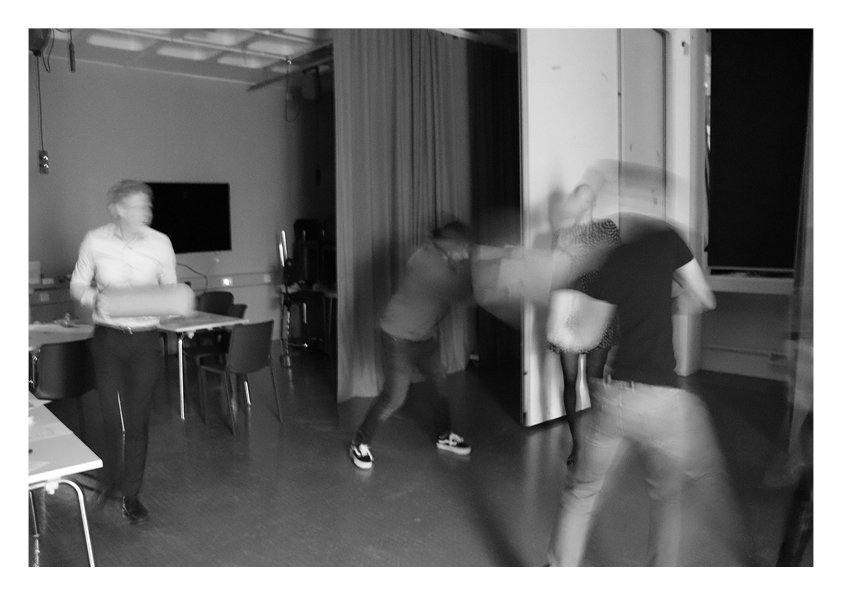
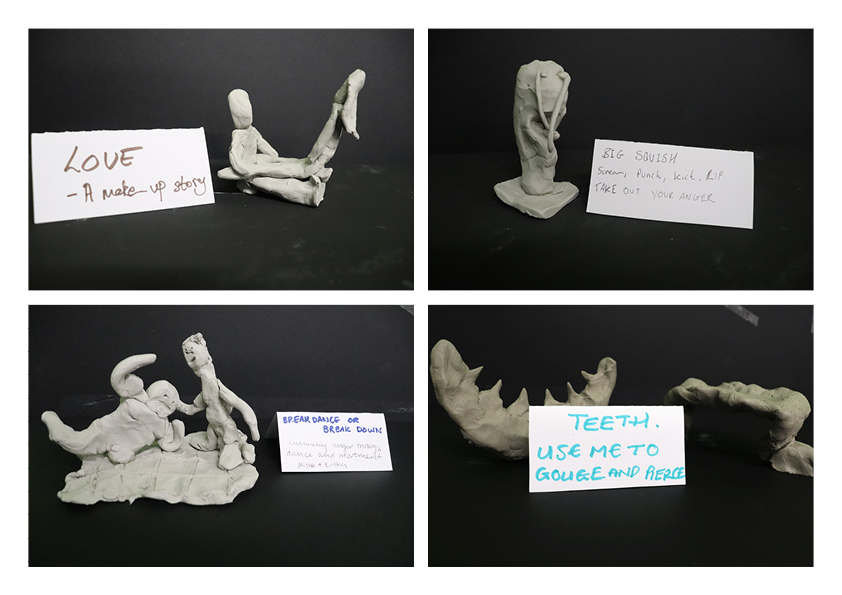
Research Question
Historically, the access and expression of anger has been restricted for marginalized communities.
How can I facilitate a deeper understanding, reverence, and more genuine expression of anger for people from marginalized communities?
I've always found anger to be captivating. Through my personal experiences, observations, and conversations with others, it appears to be an emotion filled with complexities – from the challenges of managing it to societal perceptions and beliefs about those who express anger. It is interwoven with issues like racism, sexism, and respectability politics. Moreover, there seems to be a significant dearth of discussions and safe spaces to express and regulate this emotion healthily. More and more people find themselves grappling with anger without access to the necessary resources or knowledge on how to effectively manage it.
Secondary Research: Literature Review
Anger is political and allowances differ based on race, gender, and economic status
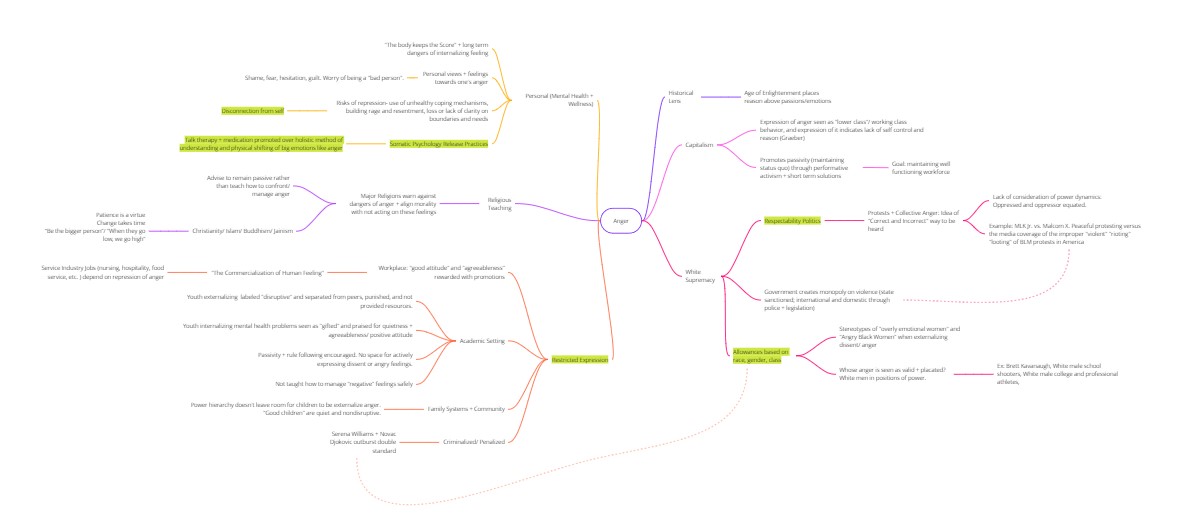
With a literature review, I sought to better understand anger in a historical, philosophical, and social theory context.
Key Direction: I narrowed my focus to the restricted expression allowance and leaned into a physical design outcome since my goal was for people to be able to easily access, replicate, and share resources amongst themselves.
Inspiration
Play, movement, and exploratory spaces
I was inspired by play, somatic release spaces, and communal movement. Specifically, I looked at live music mosh pits, contact sports, Marina Abramovic’s “Rhythm 0” (1974), scream therapy, and the Maori cultural practice of the Haka.
I aimed to utilize emotional design and game design strategies to create an environment that might connect and move people in similar ways.
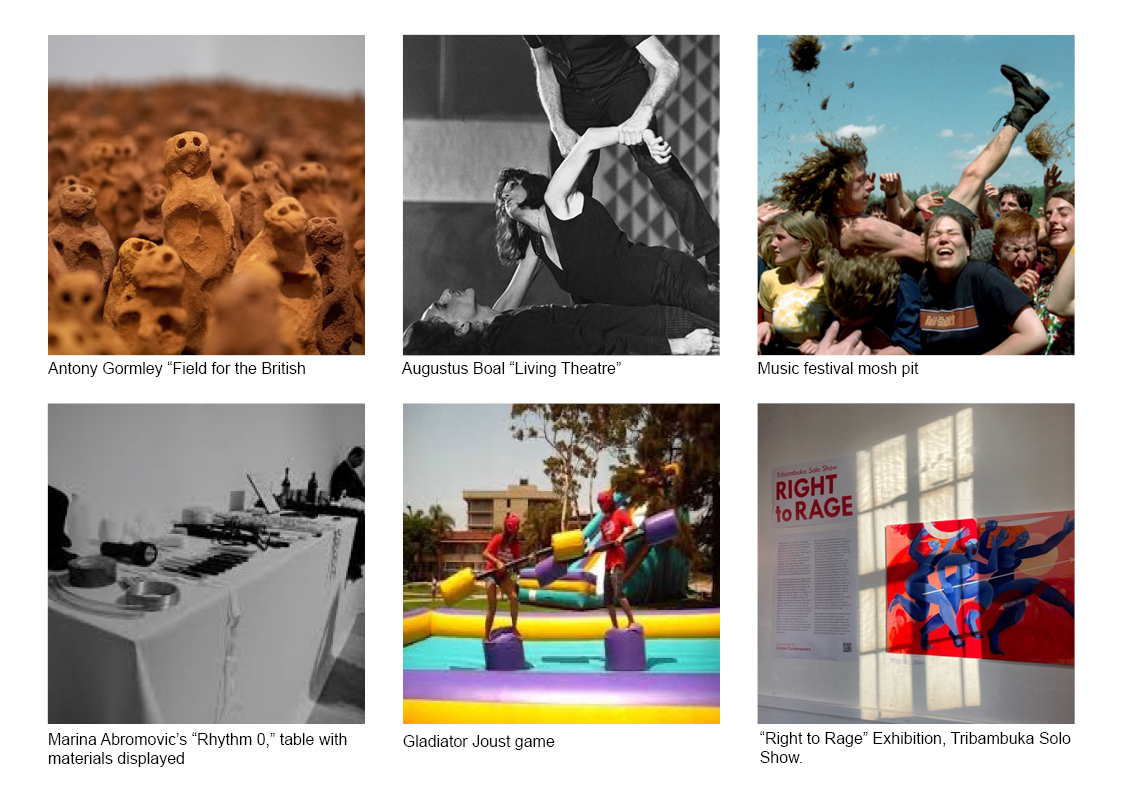
Comparative Analysis + The Gap
Current resources are inaccessible, unadaptable, and unsustainable for long term use...
I looked at both online and in person resources. The services that currently exist are for the most part inaccessible, unadaptable, or unsustainable as a longterm anger expression tool especially for those uncomfortable or unfamiliar engaging with this emotion.

Primary Research
Anger Interviews + Directed Storytelling
I engaged 9 people from my target demographic, adults 18-35 years old with one or multiple marginalized identities, in directed storytelling and semi-structured interviews. They were asked the following:
- What typically tends to make you angry? Why?
- Can you tell me about a recent time that you felt angry, and what was that journey like for you? What happens?
- Is there anything else you’d like to add or wish I had asked about?
Themes + Analysis
After transcribing the interviews, there were a wide range of thoughts and experiences with anger. The following three were prominent in most conversations: control (either not having it or being subjected to someone else’s control), the desire for some form of release (hitting something, shouting), and the physical manifestations of the angry feeling in the body (paralysis, sweating, heat, panic, restlessness.)
- Verbal ventilation (to friends, family, other)
- Using Distractions (social media, television, performing other unrelated tasks)
- Isolating self to manage (typically in home or privacy of room, listen to music, can also overlap with cognitive processing and distraction seeking)
- Cognitive processing (ruminate, re-think situation, try to forgive and understand other person’s perspective, think about what could have been done differently)
- Channeling (going for runs, using punching bag, completing household tasks aggressively, putting feeling into creative endeavors)
- Active aggression (tantrum- type behavior; screaming, breaking things, making threats, “snapping” at other)
- Passive aggression (passive commentions and behaviors)
Overlapping User needs
Anger release looks different for everyone, so the design should be easily accessible and adaptable to the basic three needs
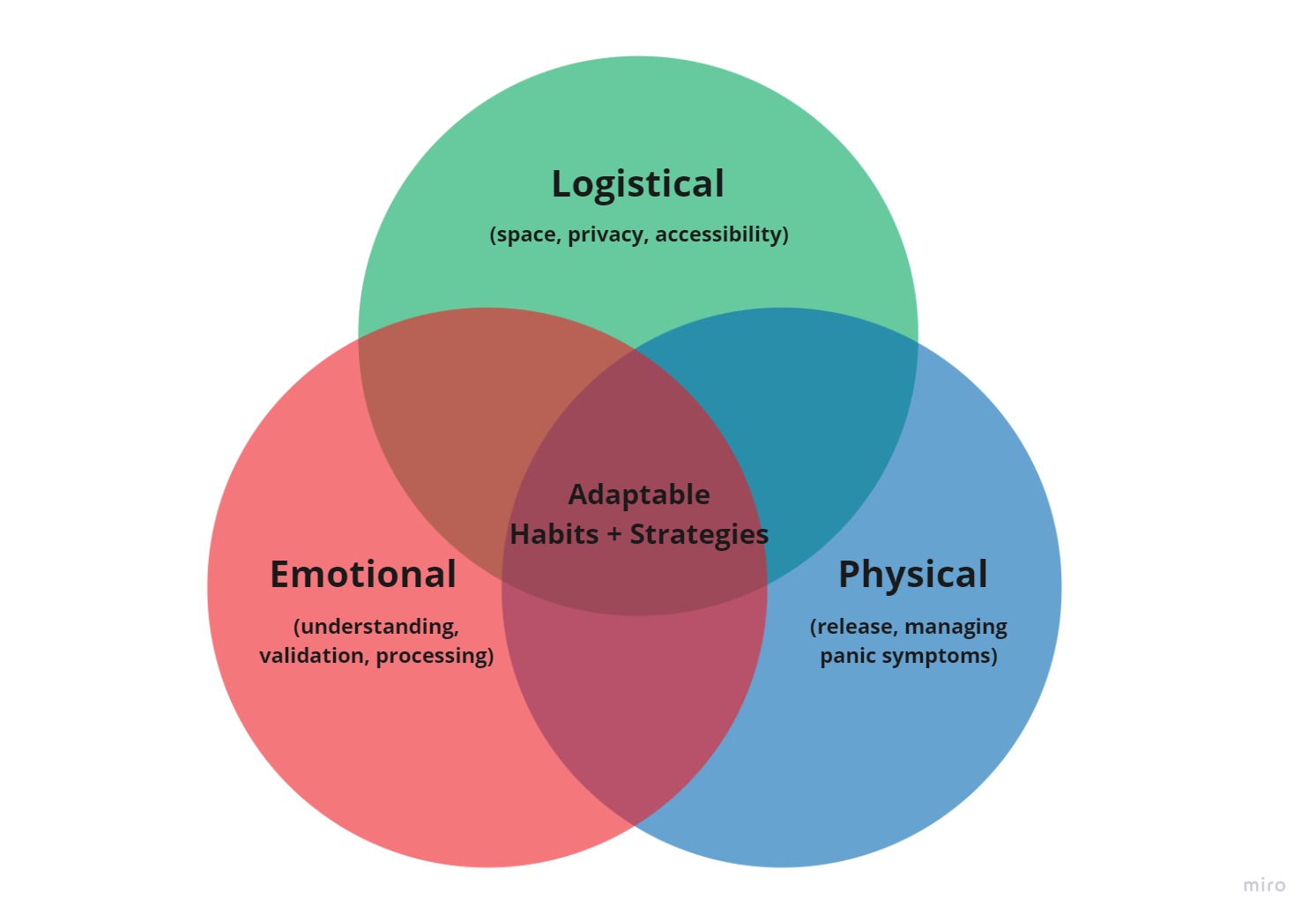
After analyzing the interviews, I grouped the user needs for the design outcome into the following: logistical, emotional, and physical. Since anger release needs and practices are different for everyone, I chose to opt for an adaptable rather than a fixed design outcome.
Design Objective: Meet all three user needs with an accessible, adaptable, and easily replicable design that teaches habits and strategies to facilitate deeper connection to and externalization of anger as an outcome.
Exploring potential outcomes
Some of the directions I considered as an outcome were a game, toolkit, VR experience, and a video series.

Multiplayer Game

Anger Release Toolkit
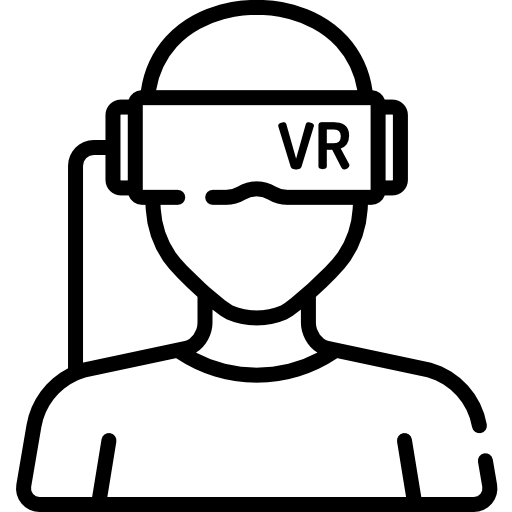
VR Experience

Movement Video Series
Key Directions
I chose to narrow my focus on the movement video series and anger toolkit as it would be:
- More accessible (low cost and not dependent on any equipment or location)
- Flexible for adjustments and personalization
- Easily recreated and shared
Co-design Workshop: "Moving through anger"
Physical anger release is cathartic, but space and noise constraints make it logistically difficult to practice in every day life
Somatic anger release practices have been shown to be helpful; therefore in order to further explore the potential of a movement video series I led a workshop to co-design the movements. What would the choreography of anger release look like for you?
Part 1: Getting to know anger
We began with a conversation about individual experiences with anger and a brief questionnaire. Participants were asked:
- What does your anger look and feel like? (Describe or draw)
- How do you typically show anger? If there were no consequences, how would you like to express it?
- Anger often comes with physical tension and sensations in the body. What helps you release anger from your body?
- What do you usually need when you’re angry? What is helpful?
- How would you help a friend who was feeling really angry?
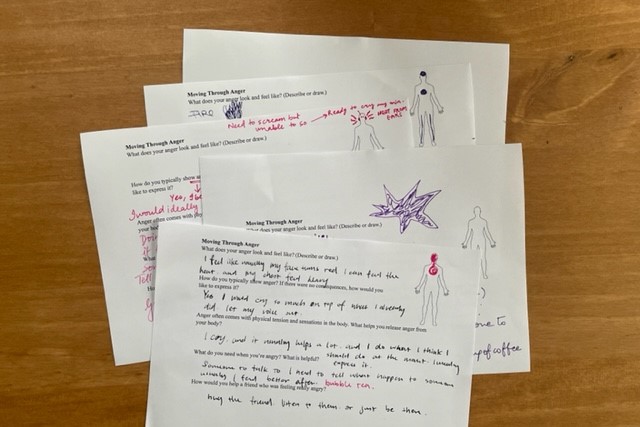
Part 2: Creating an "Anger Release" Choreography
Materials used were easily found at home. Movements built up momentum and included shaking, jumping, throwing and screaming into a pillow.
Part 2: Discussion + Reflection
Participants shared their experience, challenges, and where they could see something like this being implemented.
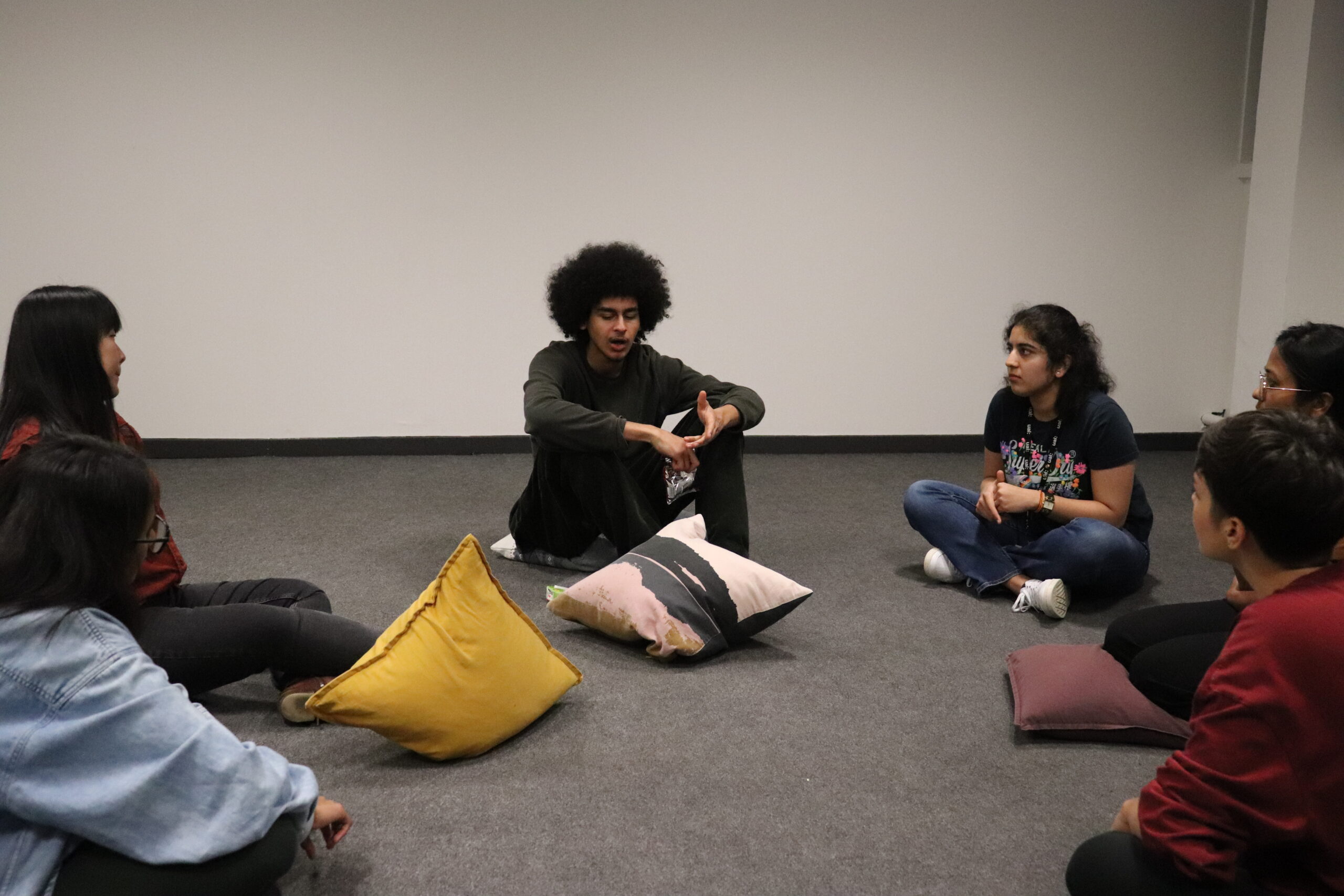
Outcome + Insights
Out of the six participants, five participants completed the questionnaire and these were transcribed and analyzed for themes. All 5 participants described anger as heat or fire and ⅘ indicated experiencing symptoms in their chest, head, and eyes. ⅘ participants mentioned some version of ideally wanting to “let my voice out,” “scream,” “shout… tantrum,” or “talk back.” Crying was commonly mentioned as a form of releasing anger from the body for ⅗ participants. In reflecting on what is helpful or needed for their own anger, ⅗ people wanted validation from another person and ⅖ wanted to be left alone. For their friends experiencing anger, ⅘ people mentioned providing some form of emotion support (consoling, listening, “giving them time to voice the things in their head”).un!
Feedback
Participants mentioned that it felt good to release tension in this way, however, many felt that they do not have the space to do this sort of release at home and cannot make too much noise. One person said they could imagine it as a park installation; however, they raised concerns about receiving unwanted attention from strangers and potentially making other park visitors (parents and children) feel unsafe or uncomfortable. This again highlighted the issue of a lack of accessible resources and spaces for safe anger externalization.
Key Directions
So far, the findings have highlighted the diversity in emotional regulation techniques and needs, making it difficult to create one fixed design outcome. In addition, the limitations of space, sound levels, and desire for privacy in anger externalization led me to choose to lead the next series of three workshops as virtual workshops. This method allowed for both private and collective practices and explorations of anger release.
Virtual co-design workshops
If not in public, then in private: Creating personal anger release toolkits with accessible materials in the privacy of your own space
A total of 16 participants in 3 separate workshops were asked to turn off their cameras and microphones and be self-directed with exploring the possibilities of anger release in their rooms with the materials that they already possess.
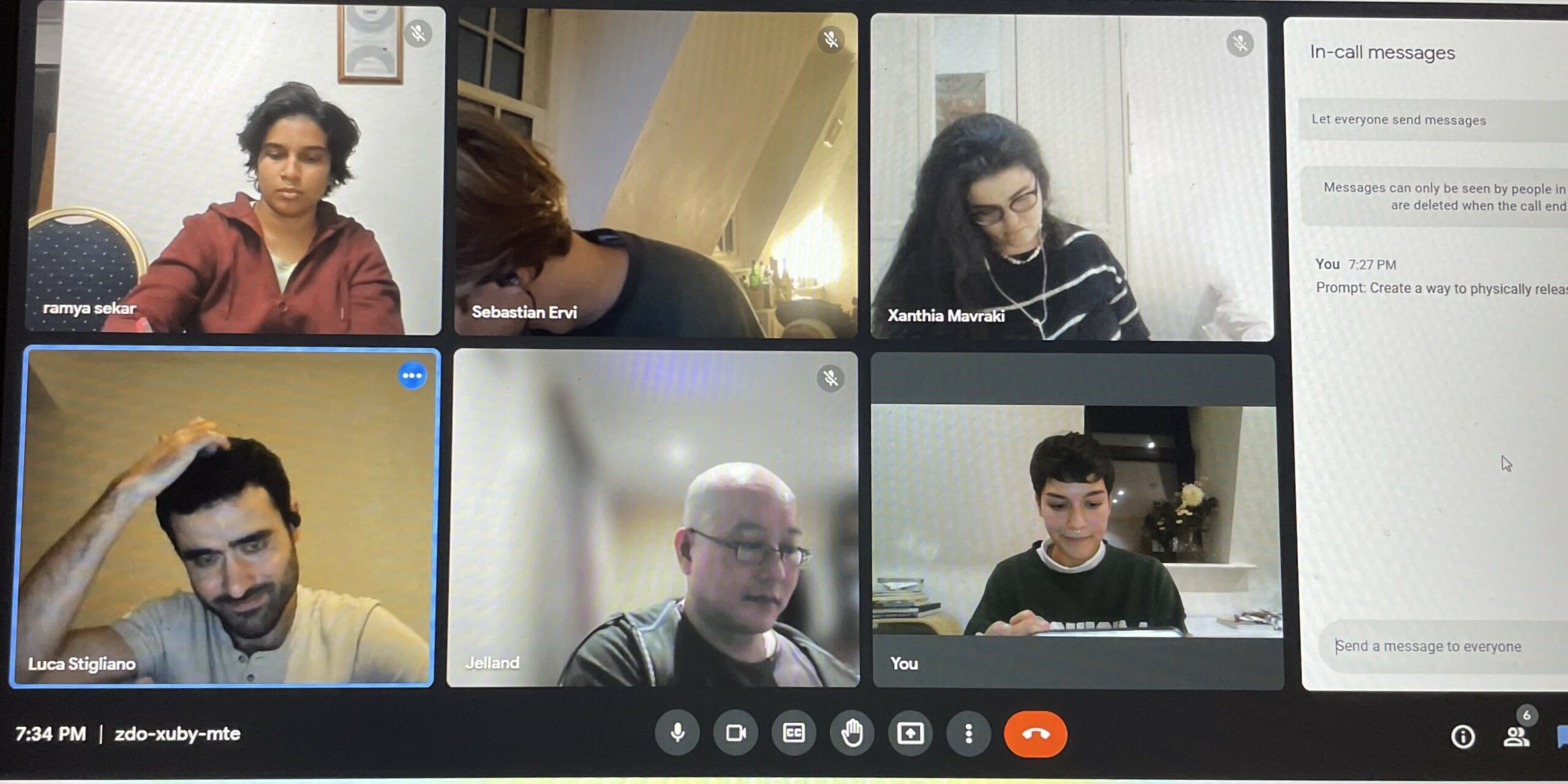
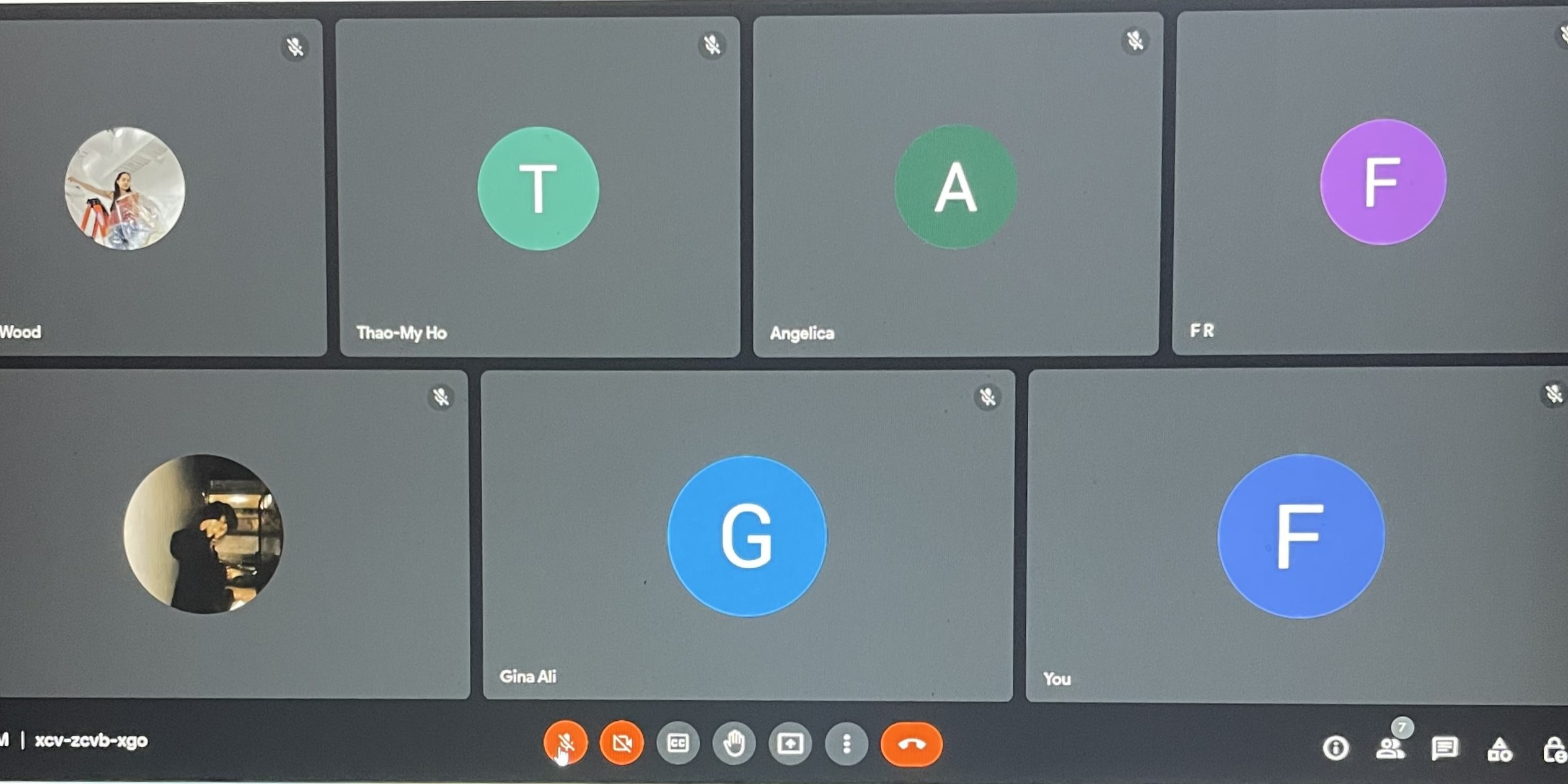
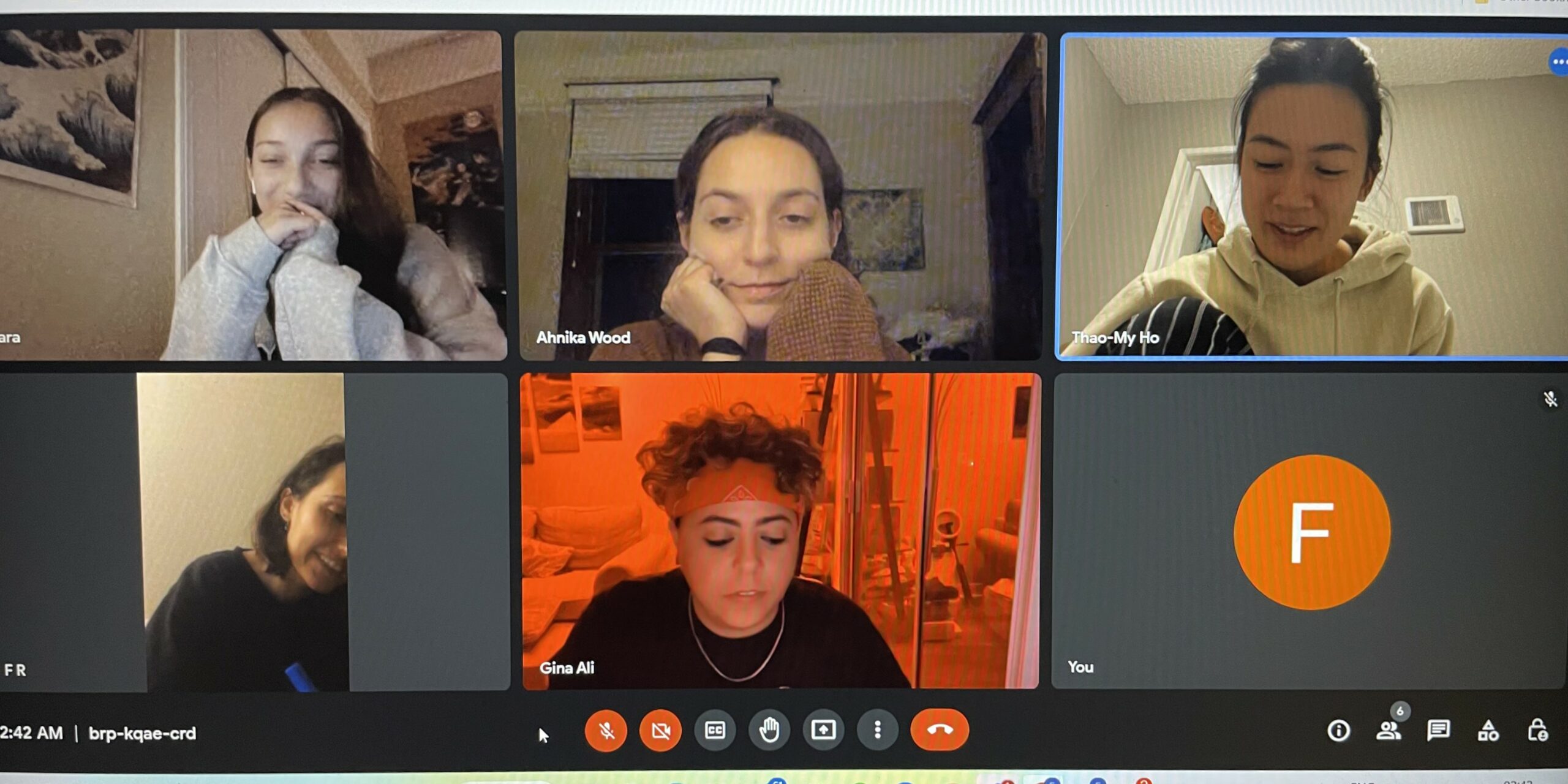
Designing toolkits for specific users and their environments is crucial. Since expressing anger can be vulnerable, often done in the privacy of homes, the best approach is to involve users in creating tools that suit their space and available materials. In the workshop, I guided participants to physically engage with their anger, build personalized toolkits, and collaboratively design an anger release solution. They used materials to express their emotions through actions like ripping, throwing, screaming, punching, and stomping. Afterward, they discussed their experiences and collectively designed something to meet all their needs.
Outcomes + Insights
The three group designs were as follows: a material exploration workshop series with metal and clay, where “turbulent energy” does not go to waste and can be used to create something positive; an outdoor fairground with different anger release structures to appeal to everyone, followed by a rest area to recuperate; and finally, a giant cauldron fueled by “community” and “liberation” that people can use to alchemize the sources of their anger, which included “guilt,” “capitalism,” and “voicelessness.”
Prototype
Designing the space: How do we balance privacy and community, structure and freedom, action and reflection?

Testing + Improvements
- Materials: The variety in materials was overwhelming, so it was narrowed down to just clay for its versatility as an open-ended medium.
- Structure: The free flow structure didn't provide the expected sense of freedom. Participants were hesitant to engage and seeking more direction. Therefore, I created 4 clearly labeled sections set to occur in specific areas of the room: move, brainstorm, build, and reflect.
- Reflection: The inital reflection prompts felt overdirected and diminished the impact. Instead they will be given cards with the prompt "What do you hope to take away from this space?" to opt for a more personal and self-directed approach. They are invited to keep these cards as a memento and reminder of this experience.
- Privacy: The open concept room didn't take into account participants' potential desire for privacy from eachother. So I incorporated 3 large room dividers into the final outcome to provide this option.
Final OUtcome
"Anger Space": Move, Brainstorm, Build, and Reflect
The final outcome for this project was the "Anger Space" along with the clay artefacts, ThroughAnger.com (currently inactive) with a toolkit guide and reading material, and a PDF to replicate this workshop. You can read my full thesis below.
Full Thesis (PDF)
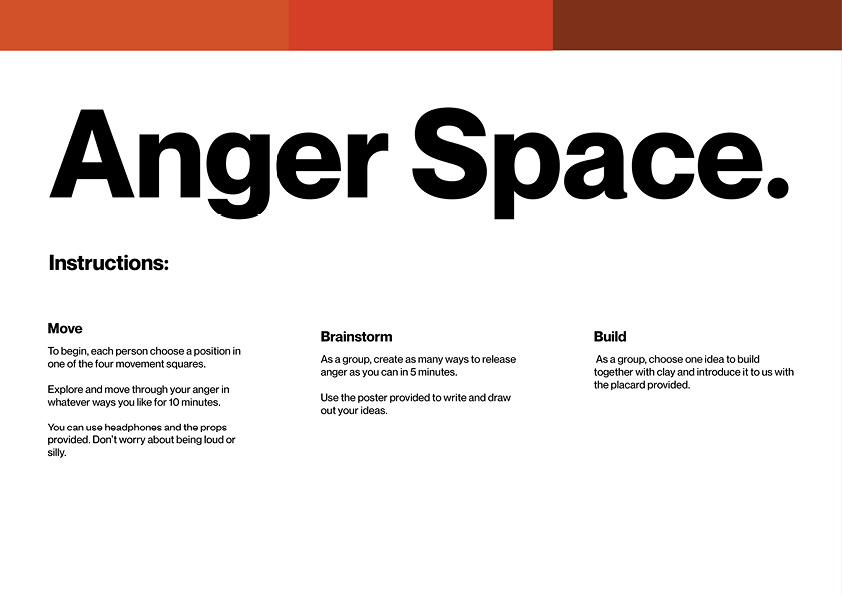
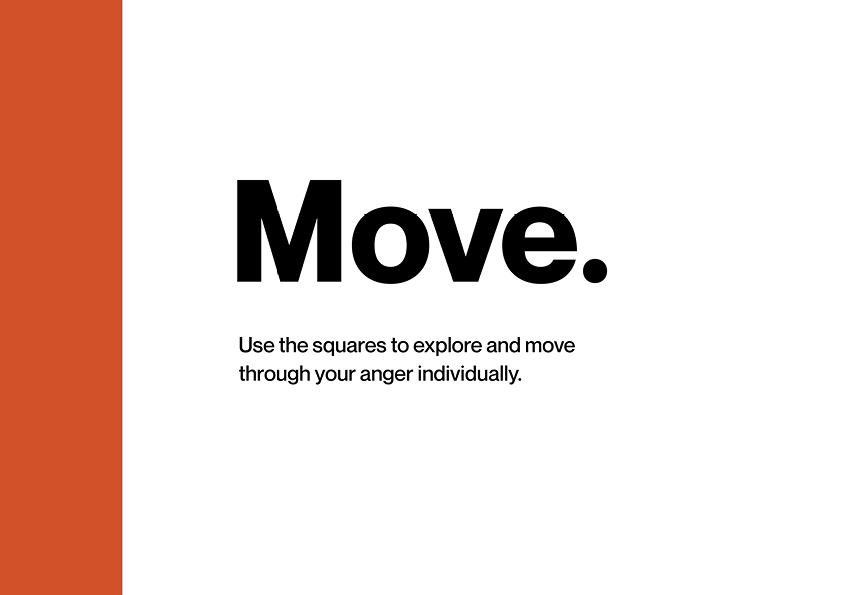

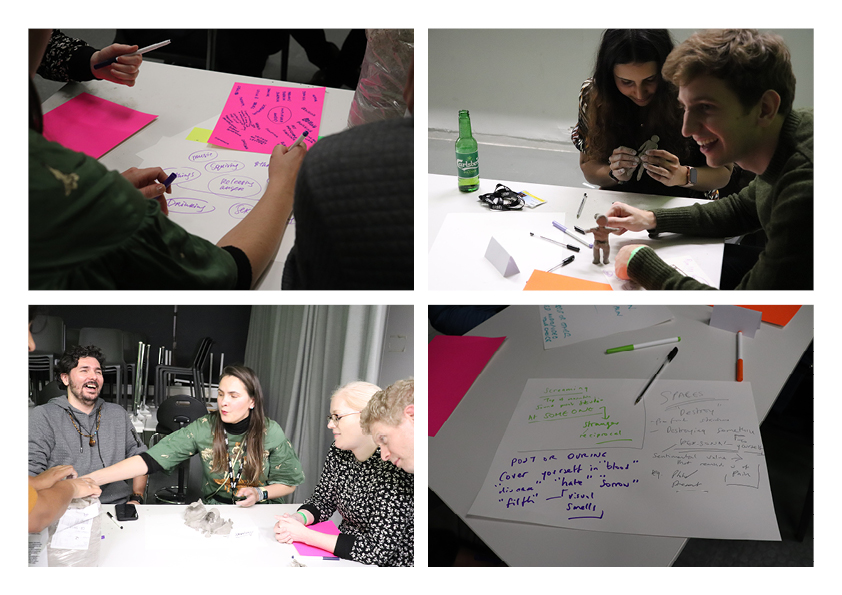
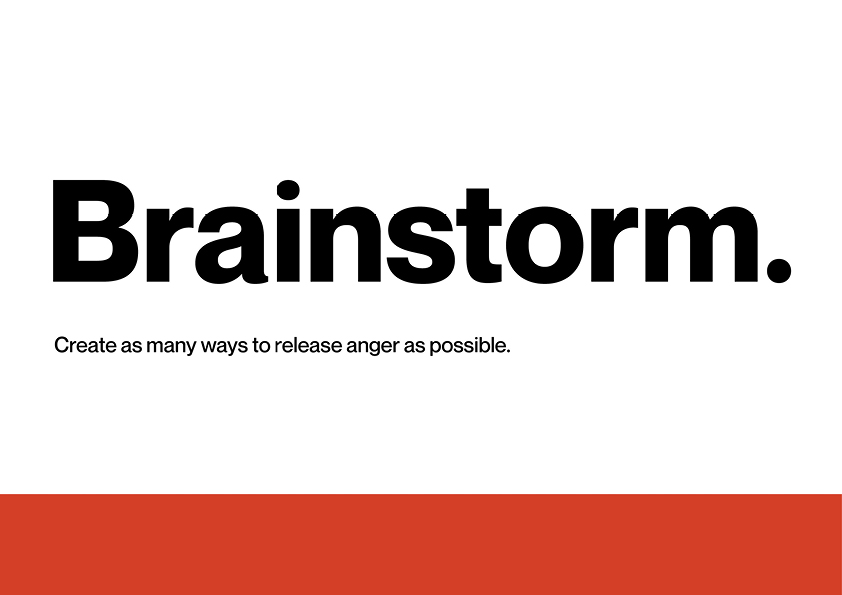
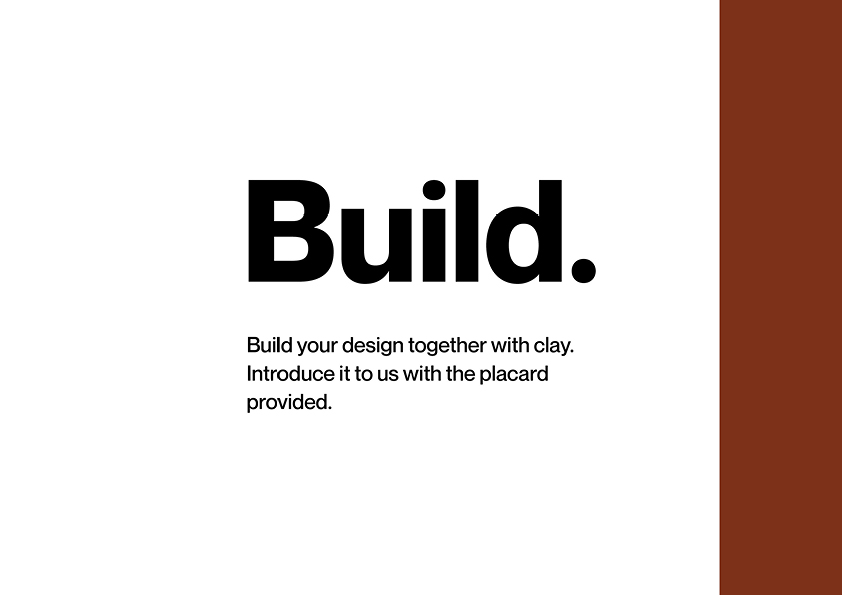
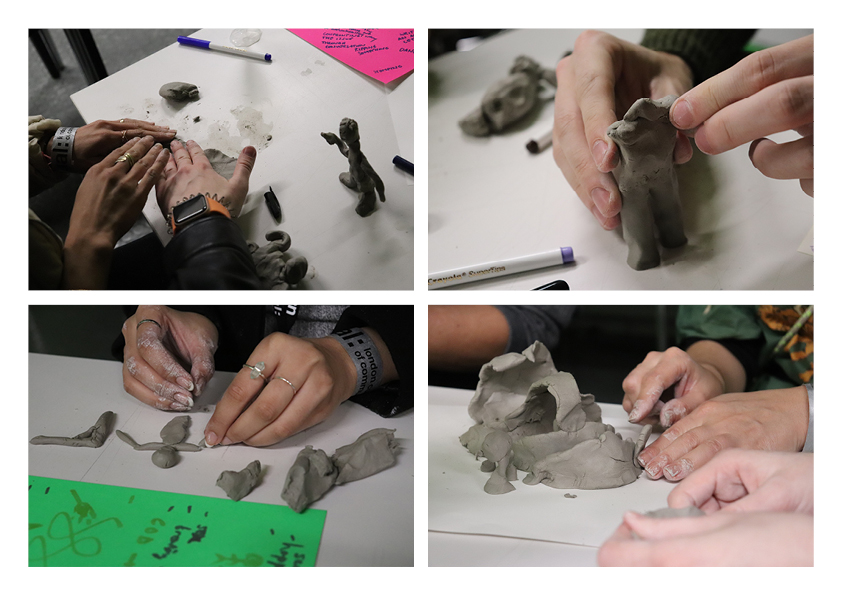

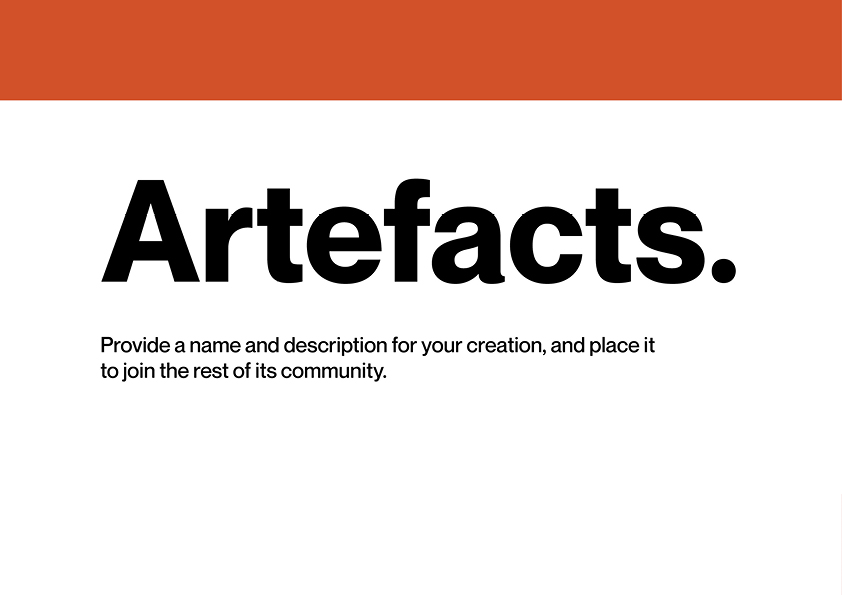
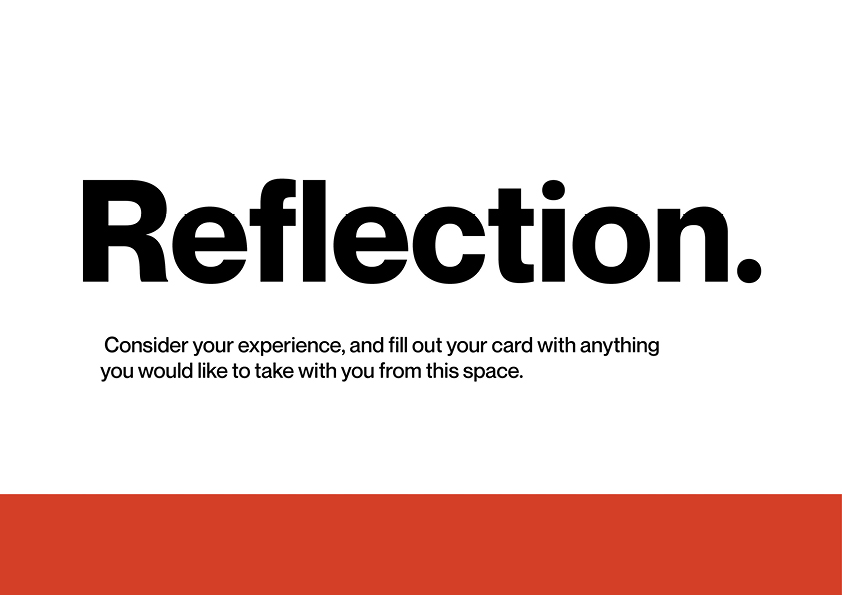
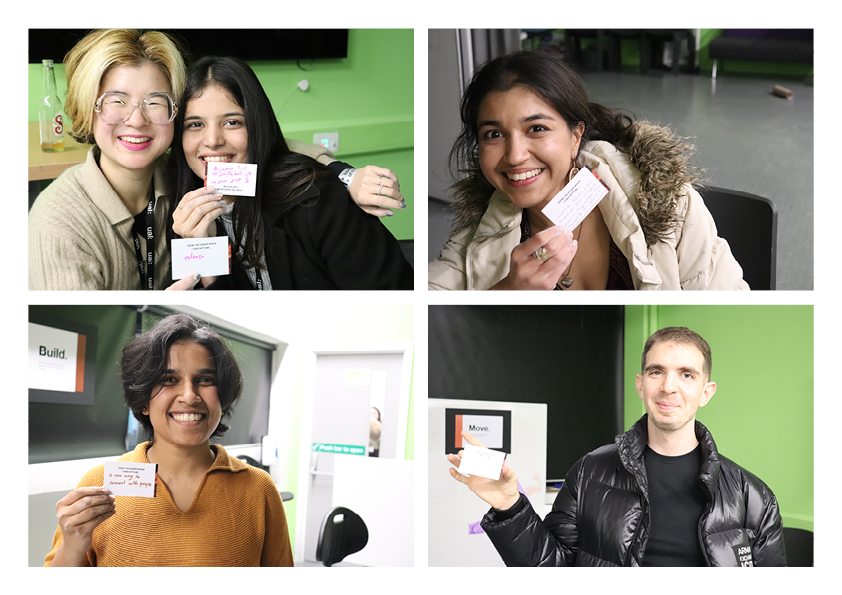
Lessons Learned + Future Directions
The "Through Anger" project has been a transformative journey that has provided valuable insights into the intersection of design, emotions, and marginalized communities. Through this endeavor, I have gained a deeper understanding of the complexities surrounding anger expression, its societal implications, and the potential for design to create meaningful change. The following lessons and future directions have emerged from this exploration:
Complexity of Anger: The project highlighted the complex nature of anger, revealing how it is intertwined with power dynamics, injustice, and emotional regulation. Anger serves as a response to inequities and can be a catalyst for change. However, its expression and reception are deeply influenced by social hierarchies and power structures.
Intersectionality and Marginalization: The exploration of anger within marginalized communities underscored the intersectionality of identities and the varying ways anger is experienced. The project emphasized the need for inclusive and culturally sensitive approaches to understanding and addressing anger within these communities.
- Collaborative Design: Engaging participants in co-design processes demonstrated the power of collaborative creation. Participants' input and diverse perspectives enriched the design outcomes and revealed a collective desire for adaptable, community-oriented solutions.
- Advocacy for Equitable Spaces: The project shed light on the urgent need for accessible and safe spaces for anger expression within marginalized communities. This experience has ignited a passion for advocacy, and I am committed to furthering the conversation, raising awareness, and lobbying for the creation of such spaces.
- Ethical Considerations: Designing for emotions necessitates ethical considerations. I have learned the importance of respecting individuals' emotional boundaries and well-being throughout the design process. This lesson will guide my approach to creating emotionally resonant experiences while prioritizing user autonomy and consent.
Future Directions:
As I reflect on the "Through Anger" project, I am excited about the possibilities for further exploration and application. In my future work, I aspire to:
- Cultural Context Enrichment: Deepen research into the cultural nuances and historical perspectives of anger expression within marginalized communities. Tailor design interventions to honor diverse backgrounds and enable more culturally relevant emotional release practices.
- Technology-Enhanced Support: Explore digital platforms and immersive technologies to create virtual spaces that enable marginalized individuals to engage in collective emotional release and support, transcending physical limitations.
- Policy and Advocacy: Collaborate with mental health professionals, activists, and policymakers to advocate for the integration of emotional well-being practices within marginalized communities. Work towards institutionalizing inclusive emotional support resources and spaces.
Workshop Series at the London LGBTQ+ Community Centre
Building on the insights gained from the "Through Anger" project, I had the privilege of leading a workshop series at the London LGBTQ+ Community Center. This endeavor allowed me to directly apply the project's lessons to a real-world setting. The workshops provided a safe and empowering space for LGBTQ+ individuals to explore and express their emotions, fostering a sense of community and emotional well-being.
Through these workshops, I not only shared the concept of using design to facilitate healthy emotional expression but also learned from the participants' experiences and perspectives. This collaborative exchange further reinforced the significance of community involvement and the potential for design to drive positive social impact.
The success of the workshop series has inspired me to continue pursuing community-centered design initiatives, collaborating with diverse groups to co-create meaningful and inclusive spaces for emotional exploration. This experience has reaffirmed my commitment to leveraging design as a catalyst for change and empowerment within marginalized communities.
Farah Zia Ⓒ 2023